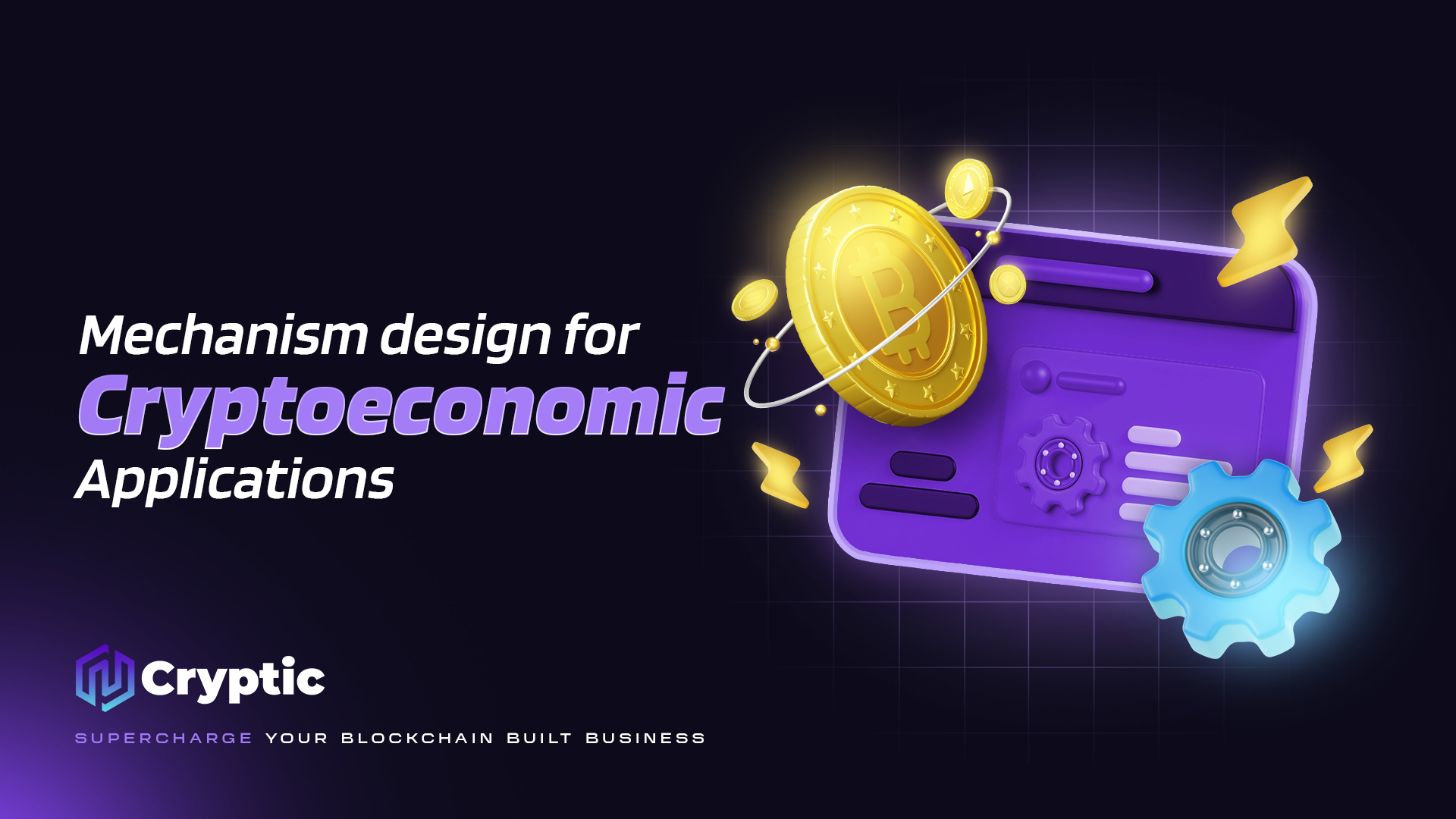
Introduction:
The rise of blockchain technology and cryptocurrencies has ushered in a new era of decentralized systems. In this paradigm, traditional centralized control mechanisms are replaced with decentralized, trustless protocols. To ensure the proper functioning and security of these systems, a critical discipline called mechanism design comes into play. This article delves into the world of mechanism design, exploring its principles, applications, and significance in the realm of cryptoeconomic systems.
What is Mechanism Design?
At its core, mechanism design is a field of economics and game theory that focuses on creating rules and incentives to achieve desired outcomes in strategic settings. It aims to align the interests of individual participants with the overall goals of the system, even when participants act in their self-interest. In the context of cryptoeconomics, mechanism design is employed to design protocols and smart contracts that incentivize participants to behave in ways that benefit the network.
Key Concepts in Mechanism Design
-
Incentives: The cornerstone of mechanism design is the creation of incentives that motivate participants to act in a certain way. These incentives can be financial rewards, penalties, or even social recognition. In cryptoeconomic systems, incentives are often implemented through token rewards, transaction fees, or staking mechanisms.
-
Game Theory: Mechanism design heavily relies on game theory, which analyzes strategic interactions between rational agents. By understanding the incentives and potential actions of participants, mechanism designers can craft rules that lead to desirable equilibria, where no participant has an incentive to deviate from their chosen strategy.
-
Information Asymmetry: In many real-world scenarios, participants possess private information that others do not. Mechanism design addresses this information asymmetry by creating mechanisms that incentivize participants to reveal their private information truthfully. For instance, in a decentralized auction, bidders might be encouraged to reveal their true valuations to maximize their chances of winning the auction.
Mechanism Design in Cryptoeconomic Applications
Mechanism design has found numerous applications in the cryptoeconomic space, including:
-
Consensus Mechanisms: Blockchain networks rely on consensus mechanisms to agree on the state of the ledger. Mechanism design plays a crucial role in designing consensus protocols like Proof of Work (PoW) and Proof of Stake (PoS) that incentivize participants to validate transactions honestly and maintain the network’s security.
-
Decentralized Exchanges (DEXs): DEXs utilize automated market makers (AMMs) to facilitate token swaps without the need for intermediaries. Mechanism design is employed to design AMM algorithms that provide liquidity, incentivize trading, and ensure fair pricing.
-
Decentralized Finance (DeFi): DeFi protocols offer a wide range of financial services, such as lending, borrowing, and yield farming. Mechanism design is used to create incentive structures that encourage users to deposit funds, borrow responsibly, and provide liquidity to the protocols.
-
Token Distribution: The initial distribution of tokens in a crypto project is crucial for its success. Mechanism design can be used to create fair and equitable token distribution models, such as airdrops, token sales, or lock-up periods for founders and early investors.
-
Governance Mechanisms: Many blockchain projects adopt decentralized governance models, where token holders can vote on proposals and influence the project’s direction. Mechanism design is applied to create voting systems that are resistant to manipulation and encourage participation from all stakeholders.
Challenges and Considerations
While mechanism design offers powerful tools for creating robust cryptoeconomic systems, it is not without its challenges. Some key considerations include:
-
Complexity: Designing effective mechanisms can be complex, requiring a deep understanding of game theory, economics, and the specific application domain.
-
Unintended Consequences: Even well-designed mechanisms can have unintended consequences. Participants may find ways to exploit loopholes or manipulate the system for their own gain.
-
Adaptability: Cryptoeconomic systems are constantly evolving. Mechanisms need to be adaptable to changing conditions and new threats.
-
Scalability: As blockchain networks grow, the scalability of mechanisms becomes crucial. Mechanisms should be able to handle a large number of participants and transactions efficiently.
The Future of Mechanism Design in Cryptoeconomics
Mechanism design is poised to play an increasingly important role in the future of cryptoeconomics. As decentralized systems continue to gain traction, the need for robust, secure, and fair mechanisms will become even more critical.
Future research and development in mechanism design will likely focus on addressing the challenges mentioned above. We can expect to see more sophisticated mechanisms that leverage advancements in game theory, artificial intelligence, and cryptography. Additionally, there will be a growing emphasis on creating mechanisms that are not only effective but also transparent, auditable, and aligned with the values of the communities they serve.
Conclusion
Mechanism design is a powerful tool that enables the creation of decentralized systems that are robust, secure, and fair. By understanding the principles of mechanism design and applying them to cryptoeconomic applications, we can build a more decentralized, transparent, and equitable future.

Leave a Reply